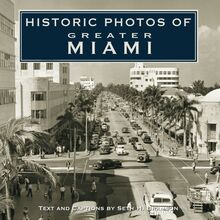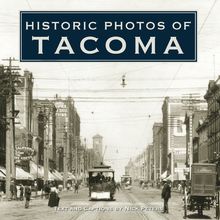Historic Photos of Honolulu , livre ebook
203
pages
English
Ebooks
2008
Vous pourrez modifier la taille du texte de cet ouvrage
Obtenez un accès à la bibliothèque pour le consulter en ligne En savoir plus
Découvre YouScribe en t'inscrivant gratuitement
Découvre YouScribe en t'inscrivant gratuitement
203
pages
English
Ebooks
2008
Vous pourrez modifier la taille du texte de cet ouvrage
Obtenez un accès à la bibliothèque pour le consulter en ligne En savoir plus
Publié par
Date de parution
01 octobre 2008
Nombre de lectures
3
EAN13
9781618586391
Langue
English
Poids de l'ouvrage
11 Mo
From the outrigger canoes of Waikiki to the tall ships of Honolulu Harbor, from the Kingdom of Hawaii to statehood, the history of Honolulu has played out against a backdrop of uncommon natural beauty. Home to the only royal residence on American soil, Honolulu witnessed in less than a century’s time the overthrow of the Hawaiian monarchy, the rise of the powerful sugar barons, and the devastating attack on Pearl Harbor. Yet through the good times and bad always this unique port city has offered an easygoing, welcoming spirit, to go with the warm trade winds and soft ocean swells for which Honolulu is world famous.
Historic Photos of Honolulu presents nearly 200 images from the later years of the Hawaiian kingdom to the early years of the fiftieth state. Reproduced in vivid black and white, the photos in this volume show the city’s evolution and change, yet with a sense of its uncommon beauty ever present.
Publié par
Date de parution
01 octobre 2008
Nombre de lectures
3
EAN13
9781618586391
Langue
English
Poids de l'ouvrage
11 Mo
HISTORIC PHOTOS OF
HONOLULU
T EXT AND C APTIONS BY C LIFFORD K APONO
Honolulu, 1873.
HISTORIC PHOTOS OF
HONOLULU
Turner Publishing Company
200 4th Avenue North Suite 950
Nashville, Tennessee 37219
(615) 255-2665
www.turnerpublishing.com
Historic Photos of Honolulu
Copyright 2008 Turner Publishing Company
All rights reserved.
This book or any part thereof may not be reproduced or transmitted in any form or by any means, electronic or mechanical, including photocopying, recording, or by any information storage and retrieval system, without permission in writing from the publisher.
Library of Congress Control Number: 2008904905
ISBN-13: 978-1-59652-499-6
Printed in the United States of America
08 09 10 11 12 13 14-0 9 8 7 6 5 4 3 2 1
C ONTENTS
A CKNOWLEDGMENTS
P REFACE
T HE L IFE OF THE L AND (1850-1899)
T ERRITORIAL T RANSITION (1900-1919)
S UGAR , S AND, AND S URF (1920-1940)
P EARL H ARBOR AND A FTER (1941-1970)
N OTES ON THE P HOTOGRAPHS
S ELECTED B IBLIOGRAPHY
Sitting to the rear of Iolani Palace in this 1880s view, the crater Puowaina is a sacred site that was used by the pre-contact Hawaiians as a place of human sacrifice and ali i burials (chiefs burials). Rainwater runoff from the crater to the basin of Honolulu helped create the large, freshwater harbor around which the city would develop. Since 1949, Puowaina, or Punchbowl, has been home to the National Memorial Cemetery of the Pacific.
A CKNOWLEDGMENTS
With the exception of cropping images where needed and touching up imperfections that have accrued over time, no other changes have been made to the photographs in this volume. The caliber and clarity of many photographs are limited to the technology of the day and the ability of the photographer at the time they were made.
This volume, Historic Photos of Honolulu , is the result of the cooperation and efforts of many individuals, organizations, and corporations. It is with great thanks that we acknowledge the valuable contribution of the following for their generous support:
Friends of Iolani Palace
Hawaii State Archives
Hawaii State Library, Regional Branch at Hilo
Library of Congress
University of Hawaii at Manoa:
Hamilton and Sinclair Libraries
Department of Economics
College of Tropical Agriculture and Human Resources
We would also like to thank the following individuals for valuable contributions and assistance in making this work possible:
Kathleen Camara
Ritchie Henderson
Markham and Luana Rosehill
This book is dedicated to my five children: Lisa, Cliff, Christian, Lauren, and Aloha, who are the source of my inspiration.
- Clifford Kapono
P REFACE
From the time of its earliest inhabitants, centuries ago, the Honolulu coastline offered two contrasting assets of natural beauty-the oceanfront at Waikiki, comfortable for the shallow-draft outrigger canoes used by the native population, and the deep harbor created by the waters of the Nu uana Valley, favored later by foreign vessels. The first of these to arrive was the English sailing ship Butterworth , captained by William Brown, in 1794. Hawaiians living and fish-farming along the water s edge referred to the bay and its vicinity as Ke Awa O Kou (the harbor of Kou) but Brown called it Fair Haven, a name that stuck when later translated into Hawaiian as Honolulu.
While Kamehameha I solidified a hard-won reign over a unified Kingdom of Hawaii, until his death in 1819, the harbor served a briefly lucrative sandalwood trade and the first stirrings of a whaling industry. Arriving in 1820, New England missionaries immersed themselves in the life of the islands and carved their mark on Honolulu s landscape with small wooden mission houses to which would be added, through their own and their children s industry, large commercial buildings. Between the 1820s and the 1850s, the population of Honolulu grew from about 3,000 to about 11,000 residents. During this time, a number of men with names that would dominate public life in Honolulu for the next century arrived in the islands.
Honolulu s attributes spurred the political interest of European nations and of Hawaii s near neighbor to the east, the United States, which established diplomatic and trade relationships with Hawaii by entering into a commerce treaty in 1826. In 1843, through the machinations of a local British official, Hawaii briefly came under British rule, but the home government quickly renounced the claim and reaffirmed Hawaii s sovereignty. In a speech to commemorate the occasion, Kamehameha III spoke the phrase that would become Hawaii s motto: Ua mau ke ea o ka aina i ka pono ( The life of the land is perpetuated in righteousness ).
In 1850 Honolulu officially became a city and the capital of the Kingdom of Hawaii when Kamehameha III relocated the capital from Lahaina on Maui. This geographical shift significantly impacted the Protestant missionary community, whose members had positioned themselves alongside a ruling class of native Hawaiians, the ali i , as council and spiritual advisors during Hawaii s transition from a feudal society into an internationally recognized member of the family of nations, governed as a constitutional monarchy. The missionaries direct influence was on the wane, however, and as the years passed those without financial support either returned to New England or settled into the general population of the islands, some to prosper in private business.
Honolulu s importance continued to grow with the whaling industry, requiring expansion of the harbor facilities and government infrastructure. But the shipping trade also brought to the islands diseases against which Hawaiians had no defenses. Consequently King Kamehameha IV and his wife, Queen Emma, lobbied door-to-door to raise funds for a new hospital to intervene in the accelerating depopulation of the native Hawaiians. The hospital was finished in 1859 and dedicated as the Queen s Hospital at Honolulu.
The rapid expansion of the petroleum industry after 1859 eroded demand for whale oil, and the Civil War further depleted the number of whalers doing business at Honolulu. Pro-Union Americans with political influence in the kingdom looked for ways to support the Northern states, and one way was to fill the demand for sugar, a Southern product. Hawaiian sugar became incredibly profitable during the Civil War, earning a competitive place on the world market, establishing an ever more firm hold on Hawaii s domestic economy, and setting the stage for conflict that lay just ahead, much of it to be played out in easy reach of Waikiki and the Nu uanu-replenished harbor.
- Clifford Kapono
Here on the grounds of Iolani Palace in the 1880s, King Kalakaua and Queen Kapi olani stand in the foreground in front of the Coronation Pavilion, with Colonel Charles H. Judd and Antoinette Swan, wife of Lyman Swan, just behind them.
T HE L IFE OF THE L AND
(1850-1899)
In 1876, during the reign of King David Kalakaua, Hawaii entered into a reciprocity treaty with the United States to secure favorable terms on sugar exports. A previous attempt to negotiate a treaty had failed, in large part due to Hawaiians strong opposition to proposed terms that would give the U.S. exclusive rights to the use of Pearl Harbor. The 1876 treaty did not grant those rights, but the issue resurfaced as renewal approached in 1887, by which time an organization of mostly American and European businessmen in Honolulu (some born in Hawaii), unhappy with Kalakaua s rule, were maneuvering to undercut his power. This was done with a new constitution imposed under threat of force by an armed militia.
The new constitution forced Kalakaua into reigning as a puppet of the American influence within his own kingdom. The new government immediately renegotiated the reciprocity treaty, this time granting the lease of Pearl Harbor to the United States. King Kalakaua died in 1891, to be succeeded by Queen Lili uokalani. In January 1893, when she announced her intent to replace the 1887 constitution with a new one, many of the same businessmen as in 1887 formed a committee of safety and conspired in her overthrow.
The committee contacted the U.S. ambassador and the captain of the USS Boston , anchored in Honolulu Harbor, and on January 16, 1893, 162 troops from the Boston came ashore. On January 17, a provisional government was proclaimed, and Queen Lili uokalani yielded under protest to the superior force of the United States of America. to avoid any collision of armed forces and perhaps the loss of life.
Whether the U.S. troops landed to actively support the overthrow or to protect American lives and property is a question hotly debated to this day. A hundred years after the fact, during President Clinton s administration, Congress issued a joint resolution apologizing for the overthrow of the kingdom.
The constitution of the Republic of Hawaii was put into effect on July 4, 1894. Four years later, against the backdrop of the Spanish-American War, Congress passed the infamous Newlands Resolution, a joint resolution annexing the republic and former kingdom of Hawaii-a nation with which it had international treaties dating to 1826. In 1900, an organic act established the Territory of Hawaii.
Honolulu s most recognized landmark, Diamond Head, an inactive volcano crater seen here in 1859 from along the Waikiki shoreline, was given its erroneous name by British sailors fooled by calcite crystals that sparkled from it in the midday sun. The traditional name for this crater is Le ahi (the brow of the yellowfin tuna). Formed an estimated 300,000 years ago, the crater was used as a military lookout beginning in the early 1900s. Named a national natural landmark in 1968, Diamond Head is now a state monument and is used by various state and federal governmental agencies.
In the 1800s, when this photo was taken, Hawaiians relied on Waikiki as an important fishing site, its waters teeming with a variety of fish and lob














